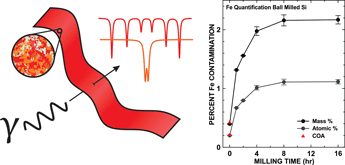Crossref Citations
This article has been cited by the following publications. This list is generated based on data provided by Crossref.
Tahmasebi, Mohammad H.
Zheng, Lituo
Hatchard, T. D.
and
Obrovac, M. N.
2023.
Li[Ni0.6Mn0.2Co0.2]O2 Made From Crystalline Rock Salt Oxide Precursors.
Journal of The Electrochemical Society,
Vol. 170,
Issue. 3,
p.
030531.
Fouilloux, Pierre
Assifaoui, Ali
Rachocki, Adam
Karbowiak, Thomas
and
Bodart, Philippe R.
2023.
In-situ speciation and estimation of iron(II) and iron(III) contents in anisotropic polysaccharide-based hydrogel by 1H low-field nuclear magnetic resonance.
International Journal of Biological Macromolecules,
Vol. 253,
Issue. ,
p.
126307.
Gauthier, Roby
Scott, B.
Bennett, J. Craig
Salehabadi, Mina
Wang, Jun
Sainuddin, Tariq
and
Obrovac, M.N.
2024.
The amorphization of crystalline silicon by ball milling.
Heliyon,
Vol. 10,
Issue. 15,
p.
e34881.
Praetz, Sebastian
Schlesiger, Christopher
Motz, Damian Alexander
Klimke, Stephen
Jahns, Moritz
Gottschalk, Christine
Heinrich, Lena
Heppke, Eva Maria
Malzer, Wolfgang
Renz, Franz
Vogt, Carla
Kanngießer, Birgit
and
Kesama, Mallikarjuna Reddy
2025.
Can laboratory-based XAFS compete with XRD and Mössbauer spectroscopy as a tool for quantitative species analysis? Critical evaluation using the example of a natural iron ore.
PLOS One,
Vol. 20,
Issue. 5,
p.
e0323678.



